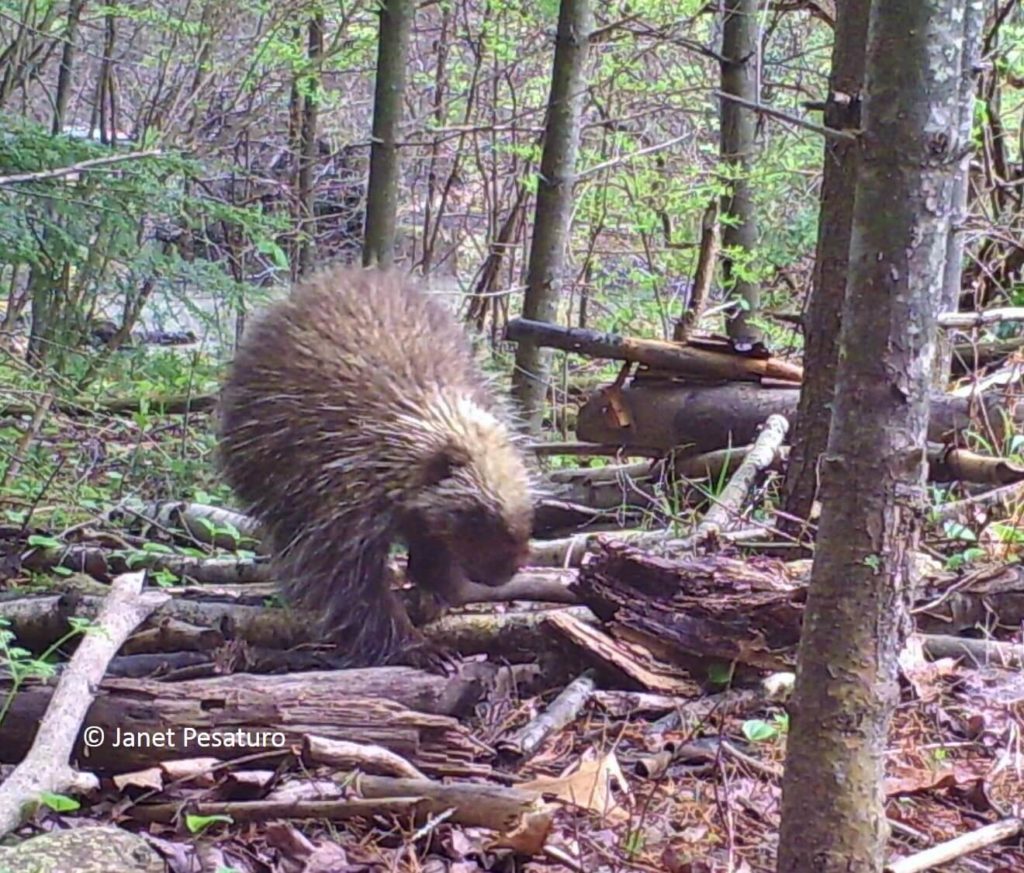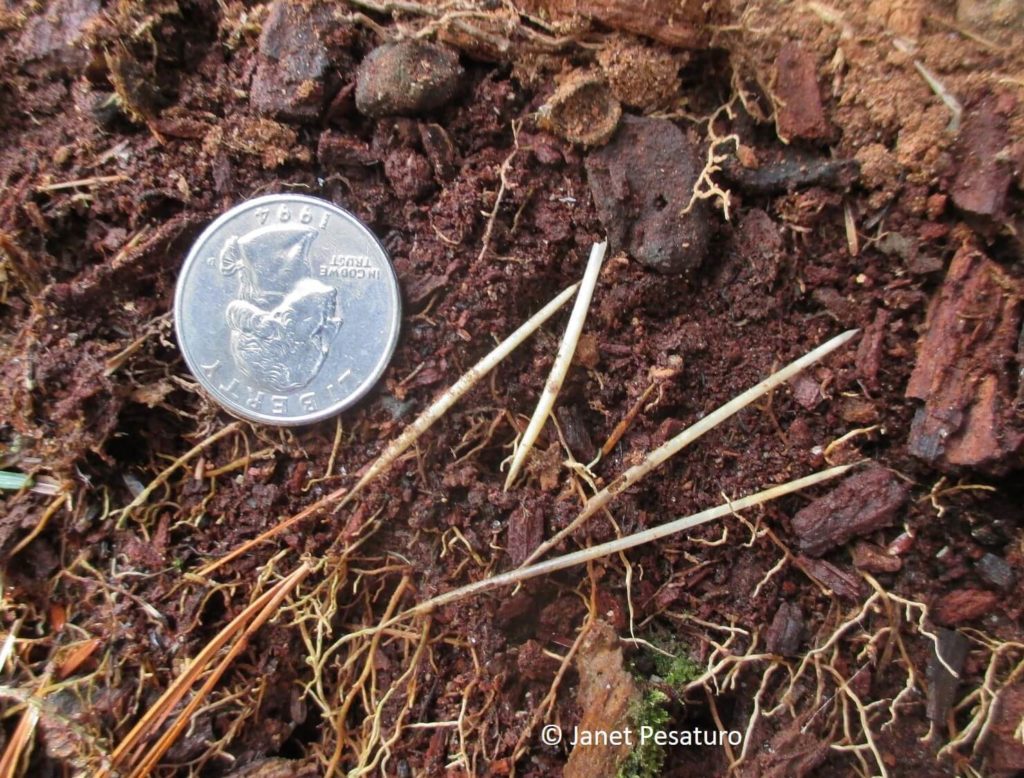Porcupine Grooming and Napping: Video
Sometimes the most interesting trail camera captures are incidental. Such was the case with this video of a North American porcupine (Erethizon dorsatum) grooming and napping. I had set the camera near an otter latrine just off a well used game trail in Massachusetts, with the intention of getting videos of playful, semi-aquatic mustelids. I did get a clip of a pair of otters passing through, but more remarkable was this porcupine who happened to stop for a snooze and a bath, right before the camera.

Trail camera photo of a porcupine in Massachusetts
It’s unfortunate that the camera I used here takes such poor quality videos, and that the animal is overexposed. I’m going to station a better camera in this spot, just in case the animal decides to reuse its resting spot. But I thought I’d post this now, because the chances of catching something like this again are slim, and you don’t often get to see a wild porcupine grooming. I was also surprised to see it napping right on the forest floor, rather than in a tree or sheltered location.
As you can gather from the video time stamp, the animal was in that spot for about 35 minutes. I clipped out most of the napping time, but retained all of the grooming activity.
Porcupine Grooming and Napping
How does an animal covered with long quills manage to groom? Watch the video and notice how it grooms by moving its claws in a front to back combing motion. The claws are long enough to reach through the quill layer, all the way to the skin. See this picture of a porcupine’s front and hind feet here.
Here’s a closeup of porcupine quills, found at the mouth of a well used den in Massachusetts:

Porcupine quills, with a coin for scale.
Sources:
Roze, Uldis. 1989. The North American Porcupine. Smithsonian Institution Press. Washington, D.C.

Nice!
It never occurred to me that porcupines groomed. The famous question is how they exchange genetic material. With your porcupine luck, perhaps you will get that too.
Haha, yes indeed, Sumner!
Nice one. I look forward to more. That is so interesting – I’ve never seen that before. You have a cool job! Makes me want to learn about wildlife cameras.
Thanks, Patty. Camera trapping is great fun. If you decide to buy one, I recommend starting with an inexpensive model. There is a learning curve to it, and if you decide it’s more frustration than it’s worth, the camera might end up collecting dust. But when/if you get the hang of finding good spots, it’s not only rewarding, it’s addicting.